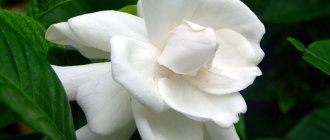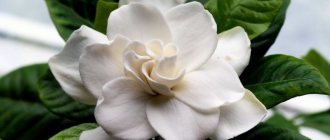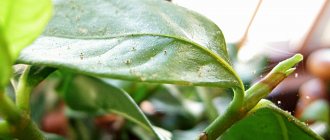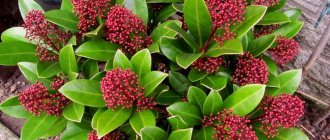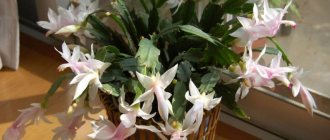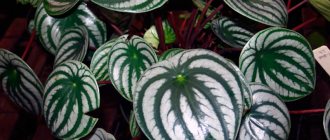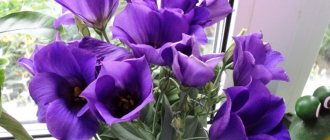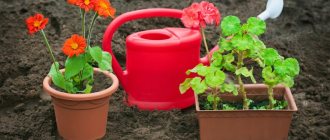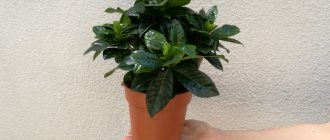Proper care of a flower is of paramount importance, since not only its appearance, but also its general condition depends on it. Caring for gardenia is even more painstaking work, since it is very demanding of the environment.
The gardenia plant is a popular houseplant that dates back to the 18th century. Botanists know about 134 species of gardenias, but the most popular among gardeners are Gardenia jasmine and Gardenia Tahitian. The gardenia flower has a delicate white corolla and can grow up to 1.5 meters in height.
Gardenia grows at home only if all the necessary conditions are present. Homemade hydrangea is much more capricious than wild hydrangea: it is very sensitive to changes in environment and prone to diseases. In our article we will talk about how to care for gardenia, how to create comfortable conditions for its growth and flowering.
Soil for gardenia in a pot
If you decide to plant gardenia at home, then you need to choose the right soil and prepare it for the process of planting the flower.
When choosing soil, you need to pay attention to the following aspects:
Soil type
Gardenia needs acidic soil, so you can mix leaf, coniferous, and turf soil in a 1:1 ratio. It is also necessary to add 1 part of sand and peat soil. In no case should you add lime to the mixture, as this can lead to the death of the flower. If you can’t make soil yourself, purchase soil for azaleas.
pH level
Before planting the plant, you need to check the pH level of the soil. It should be in the range from 4.5 to 5.5.
Preparing for transplant
At the point of sale, plants are kept in small containers. For gardenia to develop well, it requires a certain soil composition and a larger container. After purchasing, the flower should be transplanted into another container. It is better to do this in the spring. If work needs to be done earlier, you must wait at least two weeks.
Before the procedure, water the gardenia thoroughly so that the roots are not damaged when taken out of the pot. You need to choose the right container. For a small plant, a simple plastic cup will do. When the roots completely fill it, you should transplant the bush into a larger container.
Transplantation process
The gardenia is carefully removed from the container and placed in a larger pot. The soil is not completely removed from the roots. A special drainage is placed at the bottom of the container. You can use pebbles, expanded clay or other material. Then the soil is poured in and watered. The roots must be carefully examined and dried elements removed. If there are rotten parts, they are also removed. Gardenia roots need to be kept in a solution of potassium permanganate. Place the plant with soil in the pot, level it, and water it again.
In flower shops you can purchase a ready-made composition that is suitable for the flower. At home, it’s easy to make the desired mixture yourself.
If you brought a bush with white buds from the store, then the replanting process should be postponed. You should wait until the flowering process is complete.
Replanting is also performed if you need to completely change the soil or check the condition of the root system. The procedure begins after flowering, when the gardenia is in the dormant phase. It is carried out more often in autumn or early winter.
Water the gardenia with settled water at room temperature. After transplantation, the leaves of the bush may wither. This phenomenon is considered normal for gardenia. If favorable conditions are created, then after a week the flower will come to life. Replanting a tropical plant is stressful, so it is worth providing it with peace after this procedure.
How to fertilize gardenia
Fertilizer allows you to replenish a number of useful substances necessary for the growth and development of the flower. If the gardenia is still very young, use mineral or organic fertilizers (such fertilizers must be applied every two weeks). When growing an adult flower, it is best to use fertilizers that do not contain calcium. Gardenias need to be fed with this fertilizer every week. If it happens that the gardenia leaves begin to turn yellow, you can make a weak solution of iron sulfate. It will restore the plant and prevent yellowing of other leaves.
Propagation by cuttings
At the beginning of spring, flower growers plant gardenias. The cutting is obtained from the top of the plant, which is cut to 10 cm. You should choose a sharp knife. Using such a tool, a smooth cut will be obtained. The leaves are carefully removed, you just need to leave two pieces at the very top. Before planting, the cuttings are immersed in a weak solution of potassium permanganate. You can use a growth stimulator for these purposes, in which the shoot is left for 5 hours. The cuttings are planted in the soil and covered with film or a jar. In a month, new shoots will appear. If the cuttings are well rooted and begin to grow actively, they are transplanted into containers for permanent cultivation.
Features of care
As already mentioned, gardenia is a flower that is very sensitive to environmental changes, so it is very important to follow the following rules:
Avoid temperature changes in the room where this flower grows
Sudden changes in soil and air temperature can greatly harm gardenia, so you need to ensure that it is constant and within acceptable limits.
Create artificial lighting in winter
Gardenia comes from southern countries, so it constantly needs sunlight. In summer there is enough of it, but in winter it is necessary to compensate for its deficiency so that the gardenia does not wither and continues to bloom. This should only be done if the gardenia begins to fade. Artificial lamps can be used for lighting.
Care for your gardenia regularly
Irregular care of your gardenia can cause it to wilt. For this reason, caring for it should be regular, especially in spring and summer, when it begins to bloom with renewed vigor.
Problems and diseases
If the rules for caring for gardenia jasmine are not followed, the following problems may arise:
- Wilting of leaves - excess or lack of watering.
- Yellowing leaves - low nutrients.
- Active shedding of leaves means that the air is too dry or that the plant is infested with spider mites.
- Falling buds indicates a lack or excess of moisture. Often the same effect is produced by a sharp change in external conditions - when transporting or moving the plant to another place.
- Blackening and falling leaves - the root system is damaged. This often occurs due to excess moisture. A transplant is required.
In addition to spider mites, common gardenia pests include whiteflies, mealybugs, thrips and scale insects. They need to be controlled with insecticides.
Description
Gardenia moved into apartments from the forests of Japan, India or China. This flower is extremely beautiful. It belongs to the climbing shrubs and in nature reaches two meters in height. The bark of this plant has scales. Its petals are hard, green with a glossy sheen and lancet-shaped. Gardenia flowers are quite large - 8-10 cm, usually white, somewhat reminiscent of a tea rose. The color of the buds can be pale yellow, pink or cream. This plant has bright yellow fruits that are even suitable for consumption. The jasmine gardenia flower usually does not reach a size of more than 50 cm, but in rare cases its height can be one meter or more. This indoor plant, unlike most of its fellows, has a delicate, persistent aroma and blooms for a fairly long period of time, about four months. Gardenia blooms begin in mid-summer and last until mid-autumn. Although an already adapted flower can bloom at other times of the year, in winter it can also please with its lush buds, which are located at the tip of the stem one at a time or in pairs, which creates an unusually beautiful appearance of the plant. White large flowers are found in lush greenery.
How to care for a houseplant at home?
The flower is demanding regarding growing conditions. He reacts sharply to minor changes in the parameters of the contents or environment.
Immediately after purchase
After purchasing a gardenia, you should not rush to replant it in a new pot. You should give approximately 2-3 weeks for acclimatization. The flower experiences stress due to a change in location. Often, when buying a flowering plant, it drops its buds, thus reacting to:
- change of scenery;
- moving;
- transportation.
You can replant the flower after it has bloomed or 3 weeks after purchase. This must be done, since there are practically no nutrients left in the soil in which it was located. You can read about how to properly transplant gardenias here.
Important! Without replacing the soil, the gardenia will soon begin to weaken and turn yellow due to a deficiency of essential beneficial elements.
Lighting
In natural habitats, the flower most often grows under trees.
He does not tolerate direct sunlight, which burns him. In the room, gardenia is placed near the window on the west or east side. The plant does not like sudden changes, so it should stand there almost constantly. Changing the location during budding is especially this leads to the dropping of buds. In cold weather, it will need fluorescent or LED backlighting.
Temperature
Indoor gardenia has its own temperature at which the flower grows well and blooms well. Comfortable daytime temperatures in summer are considered to be +21°С…+24°С, at night – +15°С…18°С. You can maintain the temperature required for gardenia by ventilating it, but you should not expose it to cold air. This has a bad effect on the formation of buds, and the plant may also shed existing flowers and the buds will dry out.
In winter, the allowed temperature is +16°C. During this period, gardenia enters a dormant state, during which the flower gains strength. Sudden temperature changes have a negative impact on the appearance.
Air humidity
Humidity is of great importance for gardenia. Without it, lush flowering is impossible, because thanks to the presence of moisture in the air, flowers form and set. This plant, even at the budding stage, with insufficient humidity, can drop its buds or bloom with deformed flowers. In a separate article, we will tell you about gardenia flowering and the various reasons why gardenia may not produce buds.
To prevent the indoor air from becoming dry, you can:
- place an aquarium nearby;
- use trays with water without the root system coming into contact with it;
- install a humidifier or evaporator.
To keep the leaves always fresh and healthy, you can systematically irrigate them with filtered warm water. It is recommended to wipe the leaf surface with a damp cloth. Gardenia responds well to a warm shower given to it without wetting the soil.
Watering the soil in a pot
In relation to water, gardenia is considered a demanding and capricious flower. The soil in the pot should not be wet, but slightly damp. In summer it is necessary to moisturize 1-2 times every 7 days. After the top layer dries, the soil needs watering. Complete drying should not be allowed. In winter, you need to moisturize once a week or 10 days.
Experienced gardeners recommend adding lemon juice to the water to acidify the soil: 4-5 drops per 1 liter. You can use citric acid instead.
To prevent iron deficiency, add 0.5 grams of copper sulfate to acidified water. After 15 minutes, the water from the pan must be poured out.
During flowering, indoor gardenia should be watered abundantly. For irrigation, use exclusively soft filtered water 30°C-40°C, which does not contain salts or various impurities.
The soil
The flower does not tolerate calcareous soil. Its composition should be as close as possible to the natural habitat.
The soil should be:
- sour;
- fertile;
- loose;
- light;
- capable of holding water.
The best substrate is a mixture of equal parts:
- turf land;
- peat with sand;
- humus.
Acidic soil with a pH of 4.5-5.5 is suitable. Increased acidity leads to rapid yellowing of leaves. You need to constantly monitor the condition of the soil in the gardenia pot. As soon as it becomes dense, a crust forms, the soil needs to be loosened.
Fertilizers
At the stage of active growth and development of gardenia, systematic feeding with liquid fertilizers is required. These can be complex formulations for indoor flowering plants. But we must take into account that when applying them, the degree of saturation of fertilizers must be reduced by 2 times.
During the formation of buds and flowering, it is necessary to fertilize with products that contain a lot of iron. They are introduced 2 times in each of these periods.
The readiness for gardenia to accept mineral and organic fertilizers is determined by the development of the roots. If they completely occupy the bottom of the pot and the water is absorbed quickly, then they can be safely used.
We talked in more detail about fertilizers and soil for gardenia in a separate article.
Height
Gardenia, which grows in open ground, grows up to 2 m in height. In room conditions, its height is 1.5 m. The oval leaves of the plant grow up to 8 cm in length.
Transfer
For gardenias, a small diameter pot is best. When replanting it, you need to take a flowerpot that will be 2-3 cm larger than what was previously. It is advisable to purchase ceramic or plastic. To prevent the water from stagnating in it, you do not need to choose a pot that is too deep. It needs to have holes in it.
Gardenia is one of those flowers that do not like transplanting. This procedure is carried out as the root system grows, namely once every 2-3 years. Young plants are replanted every year. The soil is renewed in early spring and after flowering.
- You need to carefully remove the flower from the pot and shake off excess soil from the roots.
- After this, it is placed in fresh soil, which contains minerals.
- Before using the finished soil mixture, you need to make sure that it does not contain lime and that it has suitable acidity.
- A thin drainage layer should be poured onto the bottom.
We invite you to watch a video about transplanting gardenia:
